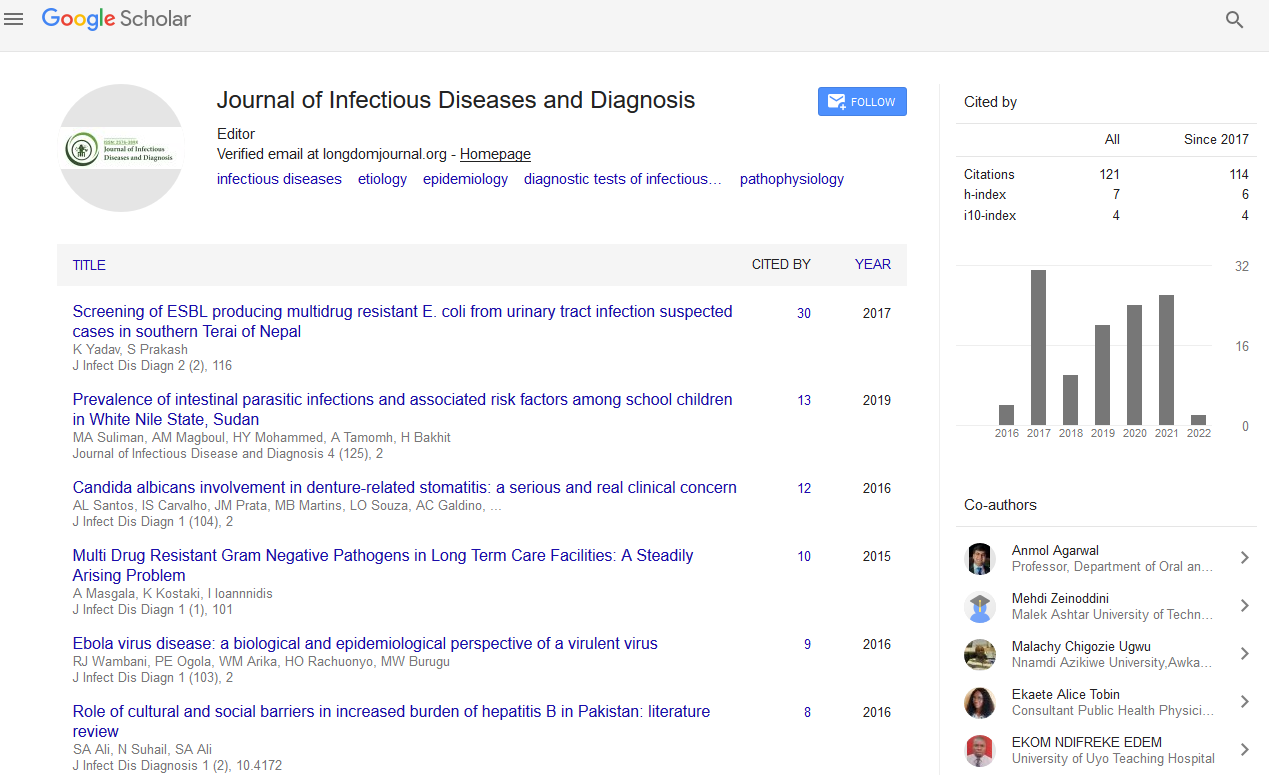Indexed In
- RefSeek
- Hamdard University
- EBSCO A-Z
- Publons
- Euro Pub
- Google Scholar
Useful Links
Share This Page
Journal Flyer

Open Access Journals
- Agri and Aquaculture
- Biochemistry
- Bioinformatics & Systems Biology
- Business & Management
- Chemistry
- Clinical Sciences
- Engineering
- Food & Nutrition
- General Science
- Genetics & Molecular Biology
- Immunology & Microbiology
- Medical Sciences
- Neuroscience & Psychology
- Nursing & Health Care
- Pharmaceutical Sciences
Abstract
Hepatitis B and C Co-Infections among HIV-1 Infected Patients Attending the Academic Model Providing Access to Healthcare Clinic, Kenya, 2014
Wambani RJ, Ogola PE, Makori AW, Nyamai DW, Lihana R and Burugu MW
Hepatitis B virus (HBV) and Hepatitis C virus (HCV) are blood borne viruses that can cause chronic liver disease leading to liver cirrhosis and hepatocellular carcinoma (HCC). More than 2 billion people have been infected with HBV with over 350 million being chronic carriers. About 3% of the world's population is infected with HCV with about 170 million being chronic carriers. Co-infections of both HBV and HCV with HIV occur regularly due to shared transmission routes. Co-infections with HIV impact on the natural history, progression and diagnosis of hepatitis as well as morbidity and mortality of those infected. Distribution patterns continue to vary across different geographic regions
The objective of this study was to determine the prevalence of HIV, HBV and HCV co-infections among HIV patients attending The Academic Model Providing Access to Healthcare (AMPATH), Eldoret, Kenya.
Ethical approval was obtained from the Moi Teaching and Referral hospital Ethical committee. 5ml of blood was obtained by venipuncture afrom consenting volunteers and screened with the ELISA tests for detecting HBV surface antigen (HBsAg) and anti-HCV antibodies. Statistical analysis was done using SPSS version 20.0.
From a total of 124 subjects, fifty three (42.28%) were male and 71 (57.72%) were female. Seven (5.7%) had HIV/HBV co-infections while two (1.6%) had HIV/HCV co-infections. Five (7.0%) females and two (3.8%) males had HIV/HBV co infections. One male (1.9%) and one female (1.4%) had HIV/HCV co infections.
There were no triple viral co-infections. Although the HBV and HCV co-infections with HIV were reported to be low among the baseline population, the prevalence rates may be higher among the patients who have been infected with HIV.


